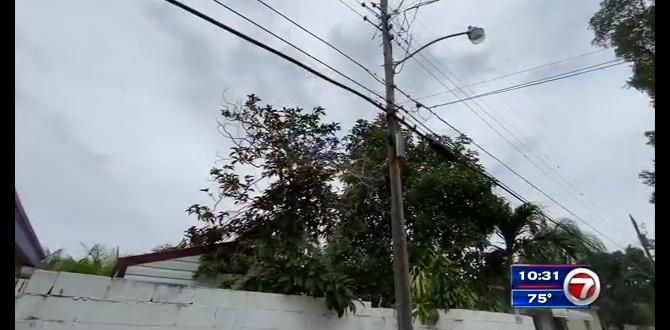Every parent faces the challenge of toilet training. It can feel overwhelming, right? You may wonder when to start or what methods work best. The truth is, toilet training doesn’t have to be a stressful process.
Did you know that most kids learn to use the toilet between 18 months and 3 years? That’s a wide window! Imagine your little one proudly announcing, “I used the potty!” It’s a moment filled with joy.
So, how do you toilet train successfully? There are fun strategies to make it easier. You can use special books, colorful stickers, or even a fun song. Little rewards can motivate your child. Each method can spark excitement in your toddler.
In this guide, we’ll explore simple steps and helpful tips. You will discover how to toilet train with ease. Get ready for some laughter and learning along the way!
How To Toilet Train: Essential Tips For Success

How to Toilet Train
Toilet training is an exciting step for both kids and parents. Most children can start around age two. Look for signs of readiness, like staying dry for a few hours. Make it fun! Use colorful charts or stickers as rewards. Patience is key; accidents will happen. Create a routine, and read books about using the toilet. Did you know that positive reinforcement can encourage kids to try? Every small success is a step toward independence!Understanding When to Start Toilet Training
Signs of readiness in children. Ideal age range for beginning the process.Starting toilet training can feel like a big step. But how do you know when your child is ready? Look for signs! They might show interest in the toilet or even hide when needing to go. The ideal age to start is usually between 18 months and 3 years. Every child is different, so watch for cues to gauge readiness. And remember, patience is key! After all, nobody wants a “potty” emergency during snack time!
| Sign of Readiness | What It Looks Like |
|---|---|
| Interest in the toilet | Wants to watch you use it or asks questions. |
| Stays dry for longer | Can hold it for several hours or after naps. |
| Shows discomfort in wet diapers | Wants the diaper changed right away. |
Preparing for Toilet Training
Gathering necessary supplies (potty chair, training pants, etc.). Creating a toilet training routine.Before starting, gather the supplies you need. A potty chair is a great first step. Training pants can help your child feel more grown-up. Creating a routine is also important. Set specific times for bathroom breaks. This helps your child learn when to go. Regular practice makes a big difference!
- Potty chair
- Training pants
- Wipes
- Reward stickers
Why is a routine important?
A routine helps children understand the process better. It builds good habits and gives them confidence.
Implementing the Toilet Training Process
Stepbystep guide for consistent training. Tips for encouraging your child during training.Toilet training can feel like a big adventure! Start with a clear plan. Set a schedule for bathroom visits. It helps children get used to the idea. Use simple words to explain. Say things like, “It’s time to use the potty!” Remember to stay positive. A sticker chart can boost motivation. Kids love prizes, even if it’s just a smiley face. Keep the mood light—throw in a funny dance to celebrate successes!
| Step | Tip |
|---|---|
| 1 | Choose the right time |
| 2 | Make it fun with games |
| 3 | Reward progress |
| 4 | Stay patient and calm |
Every child learns at their own pace. Encourage your little one and celebrate each step. Remember: mistakes happen, and giggles make it easier!
Handling Challenges and Setbacks
Common issues during toilet training (e.g., accidents, resistance). Strategies to overcome these challenges.Toilet training can feel like a roller coaster ride! Common hiccups include accidents and even some major resistance from your little one. But fear not! Stay calm and approach setbacks with patience. Encouragement works wonders. Set up a fun rewards system, like stickers or a silly dance for using the toilet. If accidents happen, laugh it off—kids learn best when they feel safe. Here’s a helpful table for quick reference:
| Challenge | Strategy |
|---|---|
| Accidents | Stay calm; use reminders. |
| Resistance | Make it fun; offer rewards. |
Remember, every setback is just a tiny bump on the road to success!
Positive Reinforcement Techniques
Effective rewards to motivate your child. Importance of praise and encouragement.Using a reward system can help your child learn faster. Children like to feel good about their progress. Some effective rewards include:
- Stickers for each success
- Special treats like fruit or a small cookie
- Extra playtime with their favorite toy
Praise is also very important. Simple words like, “Great job!” or “You did it!” make kids feel proud. Encouragement boosts their confidence. Remember, the more positive you are, the more your child will want to try!
How can I motivate my child during toilet training?
Using fun rewards and giving lots of praise can keep your child excited about toilet training.
Transitioning from Potty to Regular Toilet
How to make the switch smoothly. Tips for maintaining confidence and comfort.Shifting from a potty to a big kid toilet can be exciting! Start with a small seat that fits on the regular toilet. This lets your child feel safe while sitting tall. Remember, patience is key! If they express fear, don’t worry. Make it fun by singing silly songs. Celebrate every success. A sticker chart can be super motivating too! Plus, make sure to keep a step stool handy for those climbing adventures.
| Tip | Description |
|---|---|
| Make it Fun | Use songs and games to ease anxiety. |
| Use Rewards | Offer stars or stickers for each try. |
| Stay Positive | Cheer them on regardless of accidents! |
Post-Training Tips for Success
Maintaining routine and vigilance after training. Addressing any ongoing challenges or concerns.After your little one has successfully mastered toilet training, keeping up with their new routine is key. A consistent schedule helps reinforce good habits. Regular bathroom breaks, especially after meals or naps, can be lifesavers. If accidents happen, stay calm. They’re just as surprising as a cat wearing a hat! You can create a fun chart for your child to track progress. Check out the table below for tips on staying vigilant:
| Tip | Why It Works |
|---|---|
| Stick to a Routine | Helps them remember to go when it’s time! |
| Use Positive Reinforcement | Encouragement works wonders and makes them feel proud! |
| Monitor Their Progress | Seeing improvements can motivate them to continue! |
If any issues pop up, talk to your child. It can be as simple as asking, “What’s up?” Sometimes, they just need a bit more time to adjust. Together, you can tackle any challenge that comes your way!
Conclusion
In summary, toilet training is a big step for you and your child. Start when your child shows interest. Use a small toilet or potty. Encourage them and celebrate their successes. Be patient, as accidents happen. To learn more, read books or watch helpful videos. With practice and support, you can make this journey fun and successful!FAQs
Sure! Here Are Five Related Questions On The Topic Of Toilet Training:Toilet training is when you learn to use the toilet instead of diapers. It usually starts around age two or three, but every kid is different. You’ll need to practice sitting on the toilet, flushing, and washing your hands afterward. Remember, it’s okay to have accidents, and with time, you will get better! Celebrate your successes, no matter how small.
Sure! Just let me know what question you’d like me to answer.
What Are The Signs That My Child Is Ready To Start Toilet Training?You might see signs that your child is ready for toilet training. They may stay dry for a few hours or show interest in the toilet. They might tell you when they need to go. If your child can pull up and down their pants, that’s a good sign too. These feelings and skills can mean it’s time to start toilet training!
What Method Or Approach Is Most Effective For Toilet Training Toddlers?The best way to toilet train toddlers is to be happy and patient. Start when your child shows interest. Use fun rewards, like stickers, for using the toilet. Encourage them to sit on the potty regularly. Celebrate their success, even small wins, to keep it exciting!
How Can I Create A Positive And Encouraging Environment During Toilet Training?To create a positive environment during toilet training, be patient and cheer on your child. Give lots of praise when they try or succeed. Use fun rewards, like stickers, to make it exciting. Keep a calm and friendly tone, and celebrate small wins to build confidence. Remember, accidents happen; just stay supportive and encouraging!
What Common Challenges Might I Face During Toilet Training, And How Can I Overcome Them?You might face a few common challenges during toilet training. Sometimes, kids don’t want to stop playing to use the toilet. When this happens, you can set a timer to remind them. Also, accidents might happen, and that’s okay! We can clean up together and try again. Lastly, some kids feel scared or unsure. Encourage them and let them know it’s normal to feel this way.
How Can I Handle Accidents During The Toilet Training Process Without Discouraging My Child?Accidents are a normal part of learning. When they happen, remember to stay calm. You can say, “It’s okay! Next time, we will try again.” Help your child clean up without any fuss. Celebrate their efforts for using the toilet, even if there are accidents. This way, you keep it positive!








